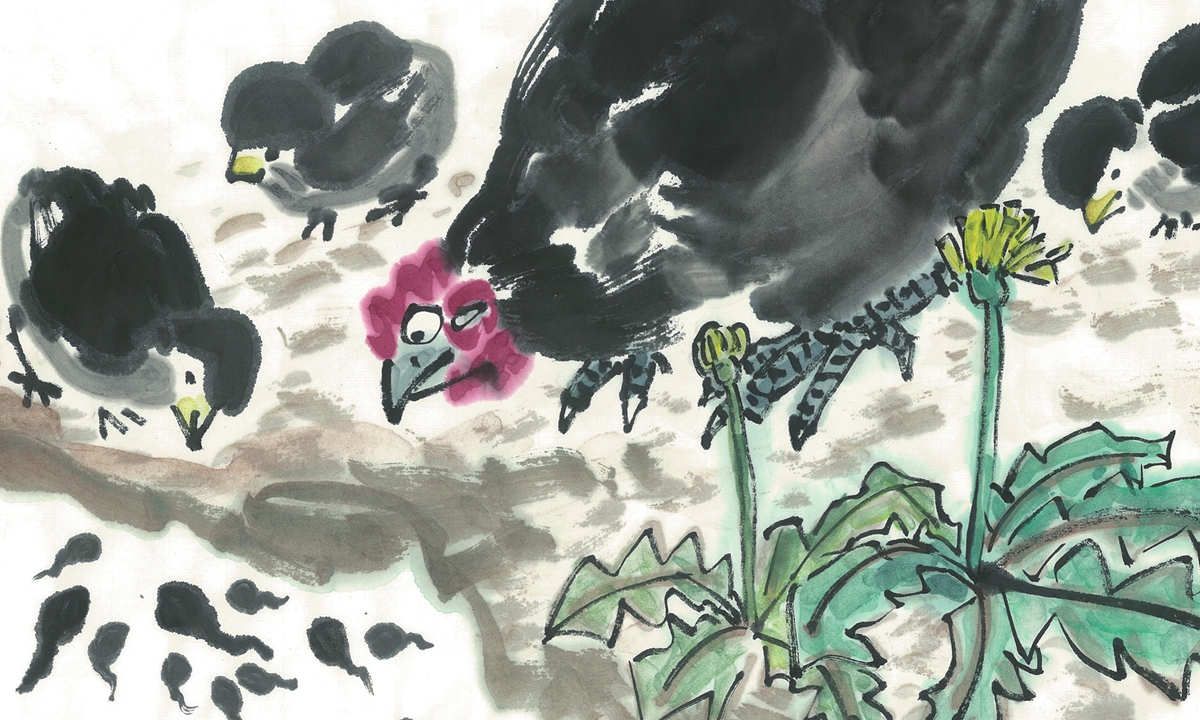
A Chinese ink wash painting depicting the story of Where's Mama Photo: VCG
'Where's Mama': China's first short animation inspired by ink wash Where's Mama was a short Chinese animated film produced 61 years ago. It was the first work of animation to bring Chinese ink wash painting aesthetics to the big screen.
The pioneering ink wash animation technique used in the film was inspired by Chinese master artist Qi Baishi's depiction of aquatic creatures such as fish and shrimp. Qi was famous for his vivid paintings of such animals as well as those of insects and birds.
The film tells the story of a group of tadpoles who go on a journey to find their mother after she leaves them. After mistaking goldfish, crabs, turtles and catfish for their mother, the group of tadpoles finally find their true mom and start to develop features of adult frogs themselves.
An interesting story behind the film starts in 1960, when Chen Yi, then vice premier of the People's Republic of China, suggested that Qi's works should be animated at the China Art Film Exhibition. This laid the creative foundation for the work.
Though the production is only 15 minutes in length, the animators created far more test footage to find the best depiction of the animals shown in the film.
"Every shot was so artistic and creative, and most of all, I love the story! It is a Chinese children's story and even my mom's generation loved it," posted one reviewer on Chinese media rating platform Douban.
The animated film was adapted from the fairy tale of the same name written by writers Fang Huizhen and Sheng Lude.
Produced by the Shanghai Animation Film Studio, the film was also adapted as teaching material included in first grade elementary school textbooks in China.
This early production documenting Chinese art aesthetics also won laurels such as the Best Art Film Award at the first Hundred Flowers Awards, one of China's "film awards trio" alongside the Golden Rooster Awards and the Huabiao Film Awards.
It also earned a reputation internationally. For instance, it won the Special Short Film Award at the Annecy International Animation Festival in 1962.
In 2021, data platform ByteHouse, which belongs to tech powerhouse Bytedance, collaborated with video streaming platform iXigua to restore the old production.
Global Times




